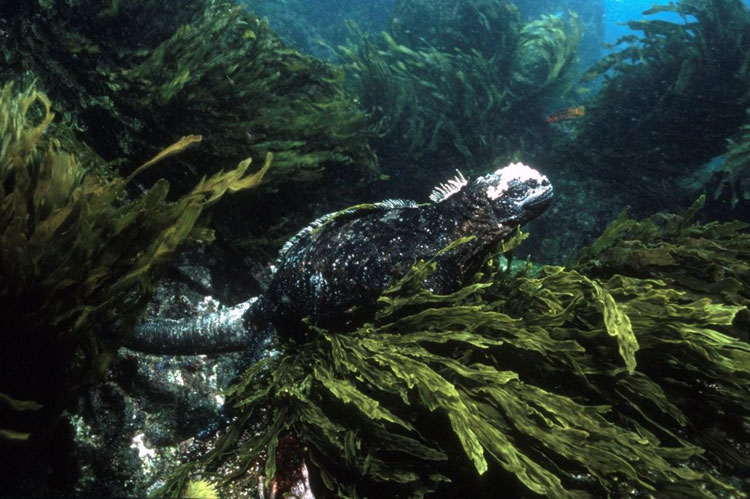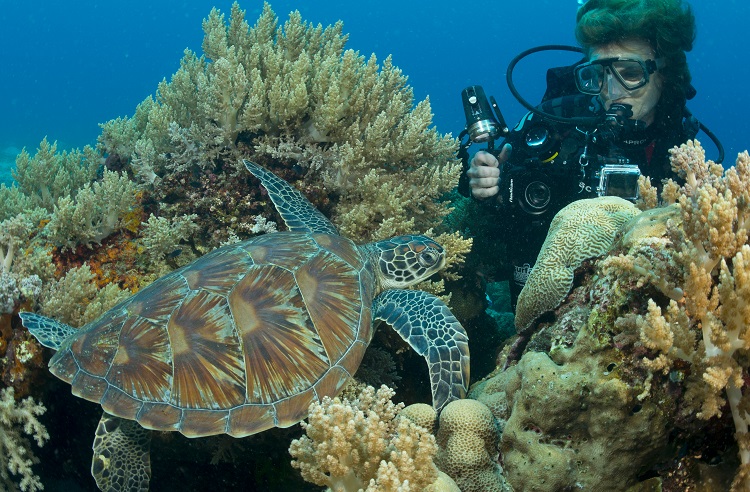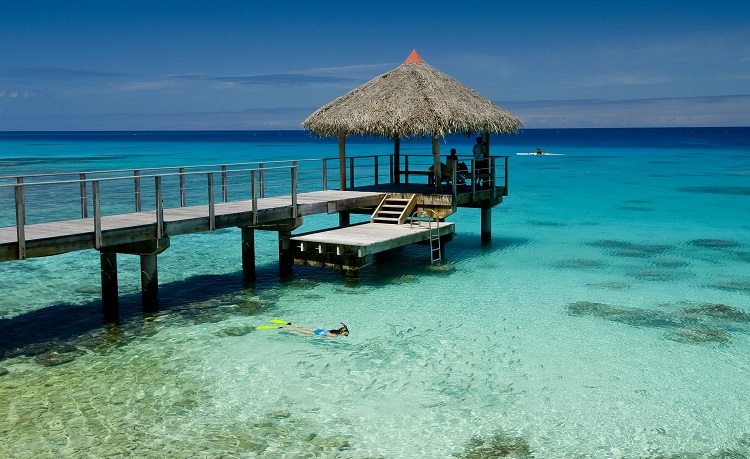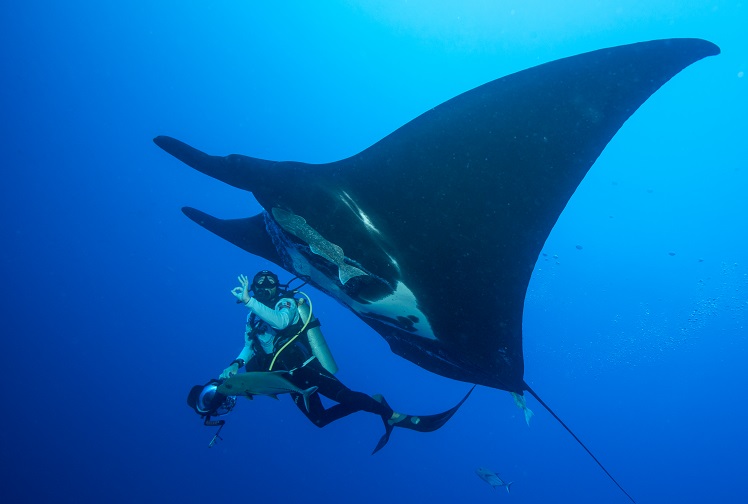Galapagos Marine Iguana
13-Oct-2011 Back to Image Gallery
This is one of the most difficult images I have ever shot even though my subject was at just 2 meters depth! The Marine Iguana feeds on algae’s in the shallow surge zone below the rocky foreshore where they spend most of their time warming up in the sun. I was forced to snorkel dive in the surf since these creatures are intimidated by bubbles. This involved finding a feeding iguana, difficult enough, then dive down and grab a thick kelp strand, hang for dear life as the surge threw me about while trying to frame a shot, focus and shoot. It went something like this, take big breath, dive down, grab kelp, hang on and frame subject just as surge covers iguana with kelp, no shot! Stay down and miss next chance as surge try’s to cover iguana with me, arse over tit, No shot!Stay down, hang on and frame, iguana not covered by kelp, Kevin not arse over tit, auto focus locked, split second opportunity, shoot! After an exhausting series of breath hold dives, the iguana shot through, I had three shots!
Photo Data: Location: Fernandina Island, Galapagos Genre: Semi Wide Angle & Strobe. Photo Data: Nikon F5, Nikkor 24mm lens, Sea & Sea Housing, Manual Exposure Mode. ISO 50 Kodak Velvia film. Exposure f8 @ 1/125th sec. Image by Kevin Deacon.
Photo Hints: Snorkel diving is a useful skill to develop for many underwater photography situations where scuba is not an option or practical. The apnea photographer will need to anticipate the technical requirements of exposure and have all settings preset on the camera before making the dive as there is not enough time to be doing this at depth as the subject comes within range.
Interesting Facts: The Marine Iguana, Amblyrhynchus cristatus, is the only salt water lizard in the world and is unique to a few islands in the Galapagos. They are a land dwelling iguana that has evolved to feed on marine algae and can do so with ease as they grip the seafloor with their strong claws. They can dive to 12 meters for as long as one hour. The salt water ingested in this process is discharged through their nostrils in bouts of sneezing during the many hours of sunbathing required by these reptiles. Until they have achieved just the right amount of heat, they cannot digest food, move about or dive.



